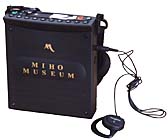Vienna, The Great Imperial Seat
The Museum for Fine Arts in Vienna (Kunsthistoriesches Museum) houses the collection of Hapsburg dynasty, the longest reigning royal family in European history. In 1866, the Museum's design was selected by a competition and its construction began in 1871. The exterior of the building was completed ten years later and it took another decade to finish the interior. As befitting the capital of a great Empire, the most lavish materials were used in the construction and decoration of Vienna's great museum. By 1891, the Museum's exquisite structure housed the splendor of the Imperial Hapsburgs. The art objects were sheltered under ceilings of marvelous frescoes executed by the most acclaimed artists of the day. Of particular note are the ancient pillars made of red granite and the late-19th century ceiling paintings in the Egyptian gallery. Fortunately, despite the firestorms of World War II, the interior suffered virtually no damage.
|
Goblet with bulls Northwestern Iran, 12th-11th century B.C. |


